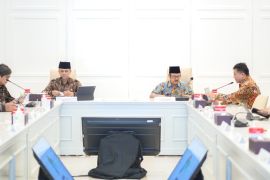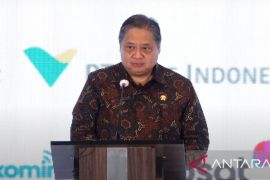"So, later, the incentives will not be one-size-fits-all, but will be focused on sectors that create high added value," the ministry's deputy for economic affairs, Amalia Adininggar Widyasanti, explained here on Thursday.
Priority will be given to investments that provide spillovers to the economy and create jobs, she informed.
Investments that are connected to domestic industrial processes and micro, small, and medium enterprises (MSMEs); are export-oriented and connected to the global supply chain; involve technology transfer/adoption; help develop research and innovation; and apply the sustainability principle will also be prioritized.
The second strategy, she revealed, is investment development based on regional advantages, with backward and forward linkages to create added value and strong domestic supply chain value.
Next, an adaptive monetary and financial sector policy that provides various alternative sources of funding for investors, including banks, capital markets, and other financial products.
Further, the government will work to improve the investment and business climate, certainty of policies and laws, and synchronization and harmonization of policies between central and regional governments and between sectors.
It will also ensure the availability of infrastructure and connectivity, availability of raw materials, human resources, green energy, and healthy business competition.
"It is necessary to take concrete steps such as simplifying licensing, creating a conducive business climate, then ensuring that these large investments can run well in Indonesia," Widyasanti said.
In her presentation, she listed a number of investment prerequisites for achieving 8 percent economic growth over the next five years.
The prerequisites include average investment growth of 8.36 percent, or higher than the average economic growth of 7.7 percent in 2025–2029.
The average investment requirement is Rp9,883 trillion per year, with the government contributing 7.3 percent, state-owned enterprises 6.8 percent, and private/community 85.9 percent.
Next, increasing investment in industrialization and downstreaming, especially in priority industrial sectors.
There are 15 downstream commodities (nickel, copper, bauxite, tin, palm oil, coconut, seaweed, petroleum, natural gas, iron-steel, silica sand, salt, tuna-skipjack tuna, shrimp, and tilapia), for which the total investment target is around Rp2,874.8 trillion.
The investment target for foreign investment-domestic investment for 2029 has been set at Rp3,543.6 trillion, while the target for gross fixed capital formation (PMTB) for machinery and equipment is Rp1,476 trillion, up from Rp692 trillion in 2023.
The third prerequisite is increasing the value of export-oriented investment in 2029 by Rp440.9 trillion to Rp483.5 trillion for foreign investment and by Rp125 trillion to Rp143.1 trillion for domestic investment.
It includes increasing the contribution of investment outside Java so that it exceeds the figure for 2023, which was recorded at 51.5 percent.
(US$1 = Rp15,937)
Related news: Bappenas to promote five industrial sectors during Prabowo’s term
Related news: Bappenas proposes two scenarios to get eight percent economic growth
Translator: M. Baqir Idrus Alatas, Yashinta Difa
Editor: Azis Kurmala
Copyright © ANTARA 2024












